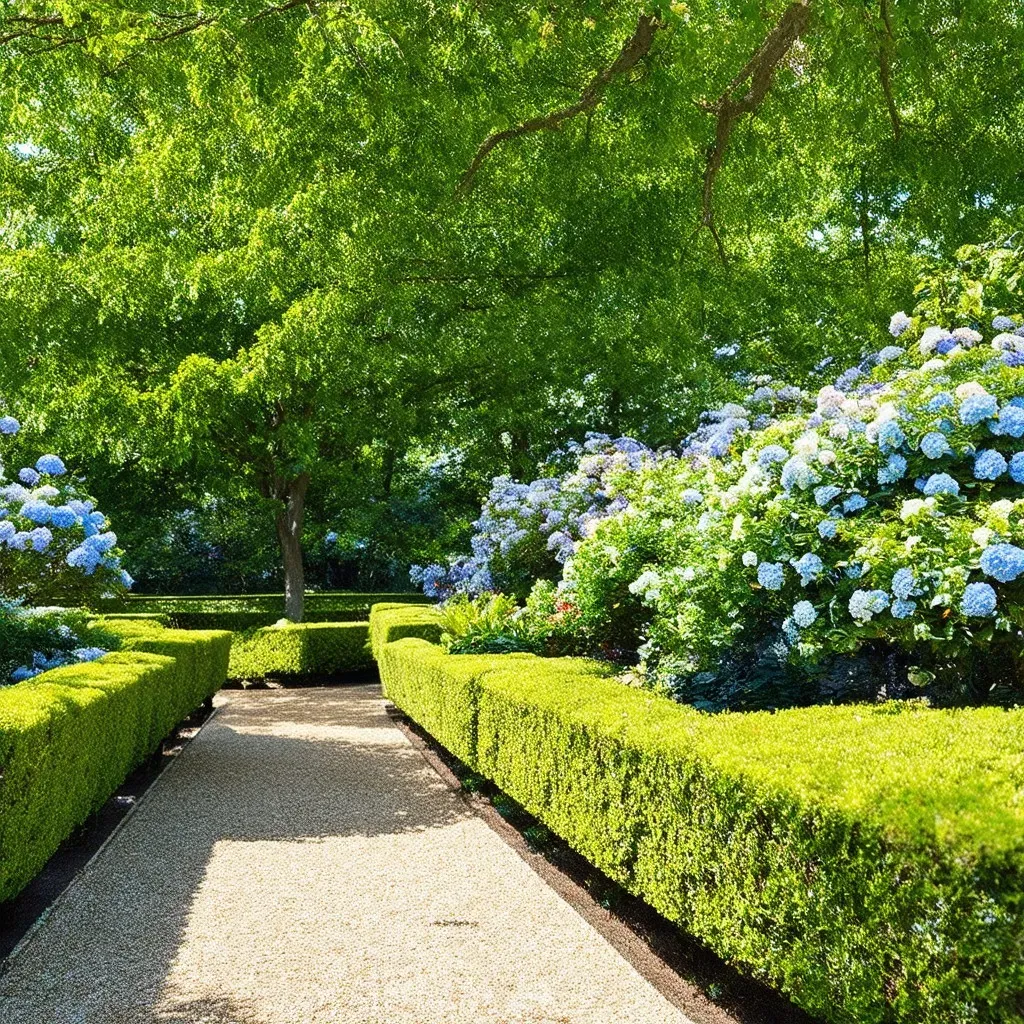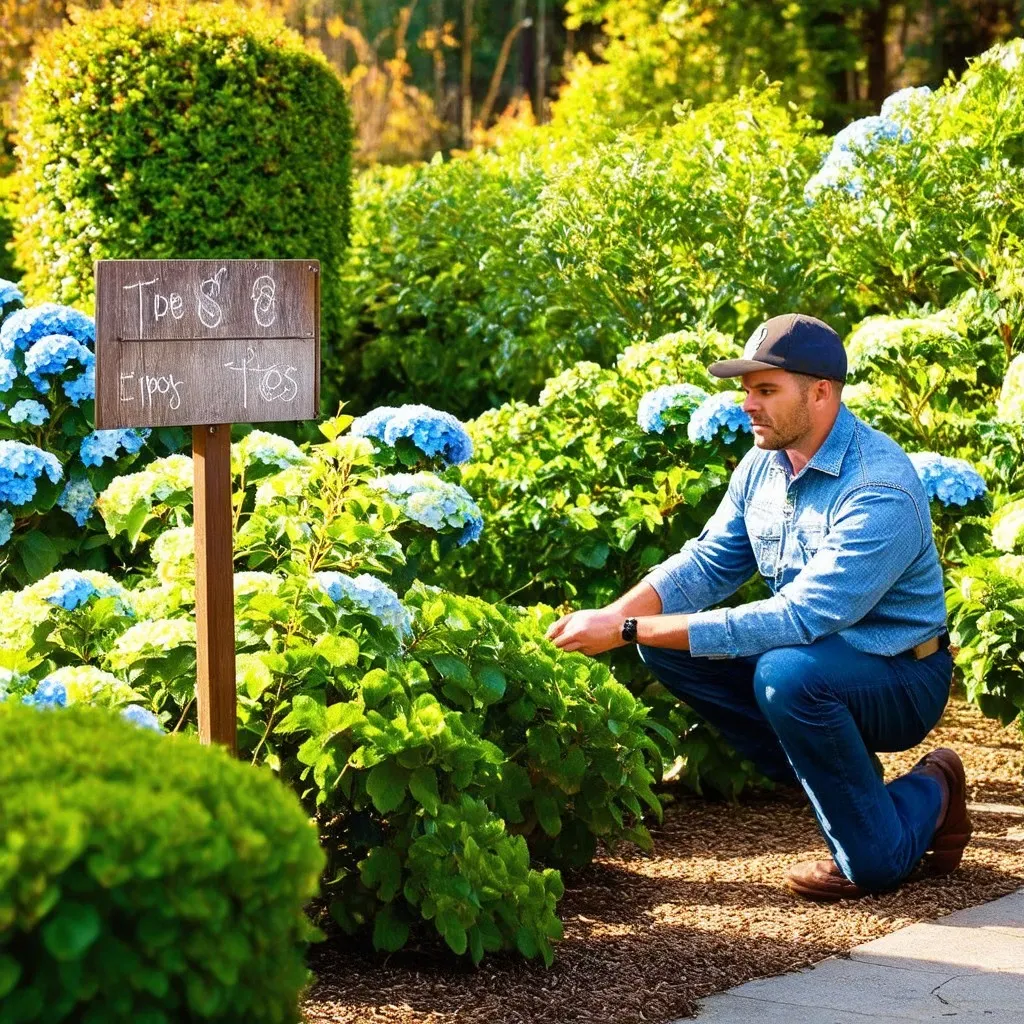When considering landscaping with boxwoods and hydrangeas, homeowners are often drawn to their beauty, elegance, and versatility. Boxwoods, with their evergreen nature, provide year-round structure while hydrangeas offer lush blooms that change with the seasons, creating a vibrant display in any garden design.
The Allure of Boxwoods and Hydrangeas in Landscaping
Boxwoods: The Evergreen Staple
Boxwoods (Buxus spp.) are renowned for their evergreen foliage and versatility in landscape design. They can be shaped into neat hedges, topiaries, or used as standalone specimens, making them a popular choice for both traditional and modern gardens. Here are a few facts about boxwoods:
| Boxwood Variety | Height | Width | Best Sun Exposure | Growth Rate |
|---|---|---|---|---|
| American Boxwood | 5-15 ft | 4-10 ft | Full sun to partial shade | Slow, 1-3 inches/year |
| Green Gem Boxwood | 2-3 ft | 3-4 ft | Full sun to partial shade | Medium, 3-5 inches/year |
| Winter Gem Boxwood | 2-4 ft | 3-4 ft | Full sun to partial shade | Slow, 1-3 inches/year |
Boxwoods thrive in well-drained soils and can tolerate a range of soil types, making them adaptable to various environments. They prefer slightly acidic to neutral soil, and regular pruning helps to maintain their shape and fullness.

Hydrangeas: The Dramatic Blooms
Hydrangeas are beloved for their large, colorful blooms that can add drama and beauty to any garden. They come in various types, including:
- hydrangea-types/unlock-the-secrets-of-hydrangea-macrophylla-the-ultimate-guide-to-care-and-varieties/">hydrangea macrophylla (Mophead): Known for its big, showy flowers, perfect for borders.
- Hydrangea paniculata (Panicle): Grows tall with creamy white flowers that turn pink.
- Hydrangea quercifolia (Oakleaf): Features unique foliage and cone-shaped flower heads.
Key Facts about Hydrangeas
| Hydrangea Type | Height | Bloom Color | Best Soil | Best Sun Exposure |
|---|---|---|---|---|
| Hydrangea macrophylla | 3-6 ft | Pink, Blue, Purple | Moist, well-drained | Full sun to partial shade |
| Hydrangea paniculata | 6-12 ft | White turning pink | Slightly acidic | Full sun |
| Hydrangea quercifolia | 3-8 ft | White to pink | Moist, well-drained | Full sun to partial shade |
Hydrangeas prefer fertile, moist soils and can thrive in various sun exposures, although they flourish best in full sun to partial shade. Importantly, their soil’s pH level directly influences their bloom color, allowing for creative opportunities in landscaping.

Designing with Boxwoods and Hydrangeas
Complementary Planting Techniques
When landscaping with boxwoods and hydrangeas, garden designers often employ complementary planting techniques. Here are some strategies to consider:
-
Height Integration: Position hydrangeas behind shorter boxwoods to create layered visual interest. This technique is particularly effective in creating depth and screens.
-
Color Matching: Select hydrangea varieties that complement the lush green of boxwoods. For instance, pairing white or pink hydrangeas with darker green boxwoods can create an elegant contrast.
-
Seasonal Rotation: Hydrangeas bloom in summer and lose their leaves in the winter, while boxwoods remain evergreen. This combination ensures year-round interest and visual appeal in your garden.

Practical Tips for Planting
-
Soil Preparation: Before planting, prepare the soil by removing any weeds or grass and loosening it with a garden fork. Boxwoods prefer well-drained soil, while hydrangeas thrive in moist, fertile ground. Amendments such as compost can improve soil fertility.
-
Spacing: Ensure that you space your plants correctly. Boxwoods should be planted about 2-4 feet apart, depending on their variety, while hydrangeas require at least 3 feet of space to grow.
-
Watering: Hydrangeas need consistent moisture, particularly during the blooming season. Regularly water them, particularly during dry spells, while boxwoods require less frequent watering.
-
Mulching: Mulch around your plants to retain soil moisture, suppress weeds, and regulate temperature.
-
Pruning: After flowering, prune hydrangeas to encourage new growth and remove dead wood. Boxwoods require less frequent pruning, typically in late winter or early spring.

FAQs on Landscaping with Boxwoods and Hydrangeas
Q1: Can boxwoods and hydrangeas be planted together?
Absolutely! Boxwoods provide a solid structure and privacy, while hydrangeas add beautiful blooms. When planted together, they create a harmonious garden design.
Q2: What is the best time to plant boxwoods and hydrangeas?
The best time for planting is in early spring or fall when the weather is cool, allowing the plants to establish their roots before the heat of summer.
Q3: How do I change the color of my hydrangeas?
Change the pH level of the soil. For blue flowers, lower the pH (more acidic) by adding aluminum sulfate, and for pink flowers, increase the pH by adding lime.
Q4: Are boxwoods and hydrangeas deer-resistant?
Boxwoods are generally deer-resistant, while hydrangeas can attract deer but are not their preferred choice. Using barriers and repellents can help protect them.
Q5: Where can I find more resources on boxwoods and hydrangeas?
Check out HGTV for more tips and ideas on landscaping with boxwoods and hydrangeas.
Incorporating well-planned landscapes with boxwoods and hydrangeas can transform your outdoor space into a stunning retreat, appealing to both the eye and the senses. By understanding their characteristics and utilizing effective landscaping techniques, your garden can become a vibrant showcase of color and texture throughout the year.



